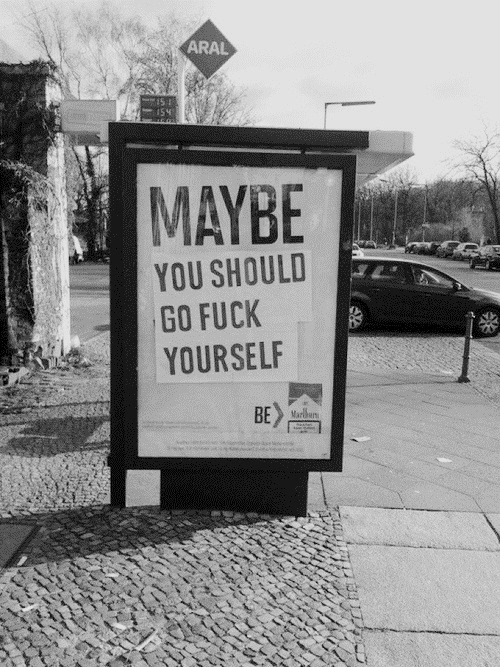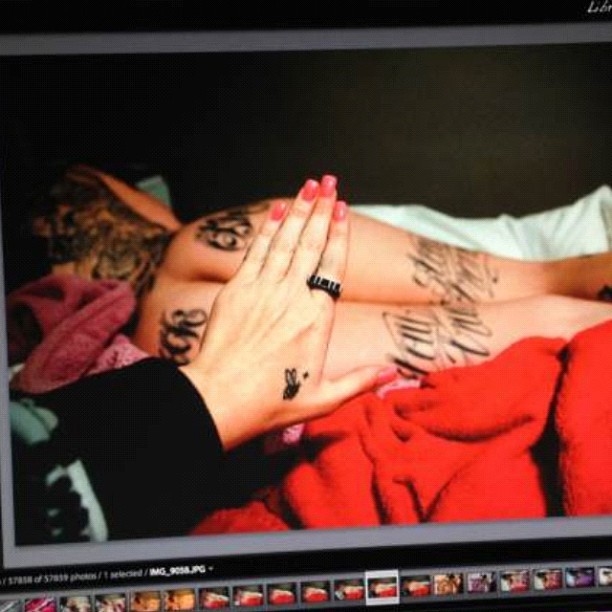
Friday, August 31, 2012
Thursday, August 30, 2012
Friday, August 24, 2012
Monday, August 20, 2012
Sunday, August 19, 2012
Thursday, August 16, 2012
Wednesday, August 15, 2012
Trapwire is watching YOU
Trapwire is the name of a program revealed in the latest Wikileaks bonanza—it is the mother of all leaks, by the way. Trapwire would make something like disclosure of UFO contact or imminent failure of a major U.S. bank fairly boring news by comparison.
And someone out there seems to be quite disappointed that word is getting out so swiftly; the Wikileaks web site is reportedly sustaining 10GB worth of DDoS attacks each second, which is massive.
Anyway, here's what Trapwire is, according to Russian-state owned media network RT (apologies for citing "foreign media"... if we had a free press, I'd be citing something published here by an American media conglomerate): "Former senior intelligence officials have created a detailed surveillance system more accurate than modern facial recognition technology—and have installed it across the U.S. under the radar of most Americans, according to emails hacked by Anonymous.
Every few seconds, data picked up at surveillance points in major cities and landmarks across the United States are recorded digitally on the spot, then encrypted and instantaneously delivered to a fortified central database center at an undisclosed location to be aggregated with other intelligence. It’s part of a program called TrapWire and it's the brainchild of the Abraxas, a Northern Virginia company staffed with elite from America’s intelligence community.
The employee roster at Arbaxas reads like a who’s who of agents once with the Pentagon, CIA and other government entities according to their public LinkedIn profiles, and the corporation's ties are assumed to go deeper than even documented. The details on Abraxas and, to an even greater extent TrapWire, are scarce, however, and not without reason. For a program touted as a tool to thwart terrorism and monitor activity meant to be under wraps, its understandable that Abraxas would want the program’s public presence to be relatively limited. But thanks to last year’s hack of the Strategic Forecasting intelligence agency, or Stratfor, all of that is quickly changing."
So: those spooky new "circular" dark globe cameras installed in your neighborhood park, town, or city—they aren't just passively monitoring. They're plugged into Trapwire and they are potentially monitoring every single person via facial recognition.
In related news, the Obama administration is fighting in federal court this week for the ability to imprison American citizens under NDAA's indefinite detention provisions—and anyone else—without charge or trial, on suspicion alone.
So we have a widespread network of surveillance cameras across America monitoring us and reporting suspicious activity back to a centralized analysis center, mixed in with the ability to imprison people via military force on the basis of suspicious activity alone. I don't see how that could possibly go wrong. Nope, not at all. We all know the government, and algorithmic computer programs, never make mistakes.
Here's what is also so disturbing about this whole NDAA business, according to Tangerine Bolen's piece in the Guardian: "This past week's hearing was even more terrifying. Government attorneys again, in this hearing, presented no evidence to support their position and brought forth no witnesses. Most incredibly, Obama's attorneys refused to assure the court, when questioned, that the NDAA's section 1021 – the provision that permits reporters and others who have not committed crimes to be detained without trial – has not been applied by the U.S. government anywhere in the world after Judge Forrest's injunction. In other words, they were telling a U.S. federal judge that they could not, or would not, state whether Obama's government had complied with the legal injunction that she had laid down before them. To this, Judge Forrest responded that if the provision had indeed been applied, the United States government would be in contempt of court."
If none of this bothers you, please don't follow me on Twitter, because nothing I report on will be of interest to you. Go back to watching the television news network of your choice, where you will hear about Romney's latest campaign ads, and whether Obamacare will increase the cost of delivery pizza by 14 to 16 cents.
Tuesday, August 14, 2012
monday late night crew
"The show details information about Henry Hill’s life as a chef at an Italian restaurant in the Midwest. It tells of how he was smuggled onto the set of Goodfellas in 1990. He speaks about phone calls from Robert De Niro, who played Jimmy Burke’s character in the film Goodfellas, and his most recent criminal act, the smuggling of drugs through an airport terminal. He also tells of the cultural clash which he is still experiencing in the Midwest, even 25 years after he left New York City."
Wednesday, August 8, 2012
Monday, August 6, 2012
THE CRISIS OF CIVILIZATION
The Crisis of Civilization is a dark comedy remix mash-up bonanza about the end of industrial civilization. A documentary feature film investigating how global crises like ecological disaster, financial meltdown, dwindling oil reserves, terrorism and food shortages are converging symptoms of a single, failed global system.
Sunday, August 5, 2012
Thursday, August 2, 2012
Strangers On a Bus

Short summary for you lazy being's: "You're on the bus, and one of the only free seats is next to you. How, and why, do you stop another passenger sitting there? New research reveals the tactics commuters use to avoid each other, a practice the paper published in Symbolic Interaction describes as 'nonsocial transient behavior."
The study was carried out by Esther Kim, from Yale University, who chalked up thousands of miles of bus travel to examine the unspoken rules and behaviors of commuters.
Over three years Kim took coach trips across the United States. Kim's first trip, between Connecticut and New Mexico, took two days and 17 hours, and this was followed by further adventures from California to Illinois, Colorado to New York, and Texas to Nevada.
"We live in a world of strangers, where life in public spaces feels increasingly anonymous," said Kim. "However, avoiding other people actually requires quite a lot of effort and this is especially true in confined spaces like public transport."
Kim found that the greatest unspoken rule of bus travel is that if other seats are available you shouldn't sit next to someone else. As the passengers claimed, "It makes you look weird." When all the rows are filled and more passengers are getting aboard the seated passengers initiate a performance to strategically avoid anyone sitting next to them.
"I became what's known as an experienced traveler and I jotted down many of the different methods people use to avoid sitting next to someone else," said Kim. "We engage in all sorts of behavior to avoid others, pretending to be busy, checking phones, rummaging through bags, looking past people or falling asleep. Sometimes we even don a 'don't bother me face' or what's known as the 'hate stare'."
The best advice from Kim's fellow passengers was:
• Avoid eye contact with other people
• Lean against the window and stretch out your legs
• Place a large bag on the empty seat
• Sit on the aisle seat and turn on your iPod so you can pretend you can't hear people asking for the window seat.
• Place several items on the spare seat so it's not worth the passenger's time waiting for you to move them.
• Look out the window with a blank stare to look crazy
• Pretend to be asleep
• Put your coat on the seat to make it appear already taken
• If all else fails, lie and say the seat has been taken by someone else
"This all changes however when it is announced that the bus will be full so all seats should be made available," Kim observed. "The objective changes, from sitting alone to sitting next to a 'normal' person."
Kim found that race, class, gender and other background characteristics were not key concerns for commuters when they discovered someone had to sit next them. They all just wanted to avoid the "crazy person."
"One rider told me the objective is just 'getting through the ride', and that I should avoid fat people who may sweat more and so may be more likely to smell," said Kim. "Motivating this nonsocial behavior is the fact that one's own comfort level is the rider's key concern, rather than the backgrounds of fellow passengers."
Kim found that this nonsocial behavior is also driven by safety concerns, especially for coach travel which is perceived to be dangerous with ill lit bus stations. Kim also found that passengers expected each other to be jaded by delays or other inconveniences.
"In a cafe, which is more relaxed, people often ask strangers to watch their stuff for a moment," said Kim. "Yet at bus stations that rarely happens as people assume their fellow passengers will be tired and stressed out."
"Ultimately this nonsocial behavior is due to the many frustrations of sharing a small public space together for a lengthy amount of time," concluded Kim. "Yet this deliberate disengagement is a calculated social action, which is part of a wider culture of social isolation in public spaces."
Source : http://www.sciencedaily.com/releases/2012/08/120801093615.htm
Source : http://www.sciencedaily.com/releases/2012/08/120801093615.htm
Subscribe to:
Posts (Atom)




